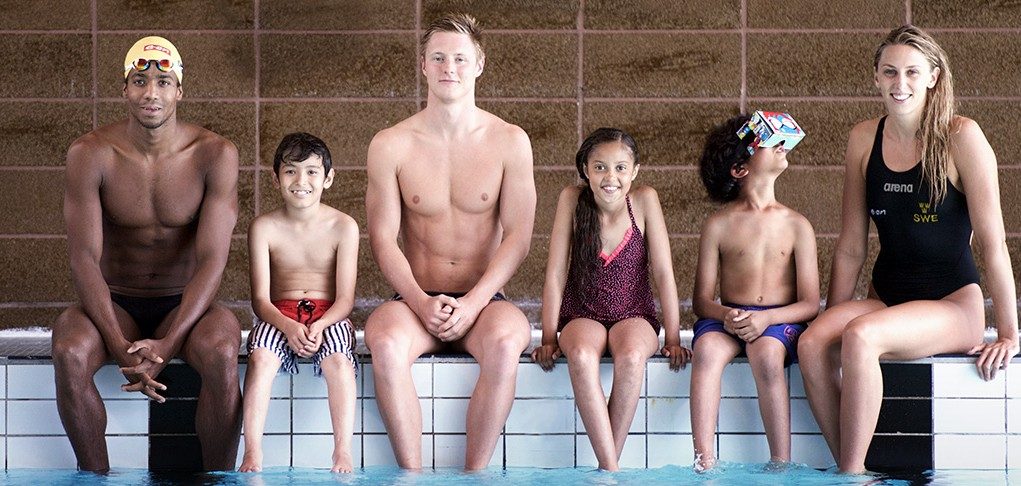A new Swedish initiative hopes to encourage the country’s children, one fifth of which cannot swim, some suffering anxiety and fear of water, to take the plunge using a 360 VR video experience.
One fifth of children in Sweden are unable to swim, according to a new initiative launched by the Swedish Swimming Federation, a significant number considering that the country’s beautiful landscape is littered with lakes and bordered by the Baltic sea. So the organisation is trying out a new technique to help encourage children who may have been reticent to enter the water, either though simple unfamiliarity or because of a genuine fear.
Launched in conjunction with energy giant E.ON, the program uses a Google cardboard powered 360 video experience to attune the children’s visual and aural senses to the feel of being underwater first, a form of ‘VR exposure’ therapy, a psychological technique used in the treatment of phobias. The 360 film, which features members of the Swedish national swim team, takes the child under the water, encouraging simulated breathing techniques.
In the film accompanying the campaign (embedded above), Physchologist Philip Lindner tells viewers, “Shorter exposure can help people experience fun things they’ve previously missed out on, and create motivation to change.”
It’s an interesting initiative, although the glossy and deliberately emotive film accompanying the campaign is far from any sort of scientific record of success here. Clearly not every child will get the chance to take a dip with a professional swimmer for one, but the approach of acclimatising children to the sense of immersion via immersion does seem to make a lot of sense.
If you want to find more information on the initiative, head here for more details on how you can get hold of a pack.







